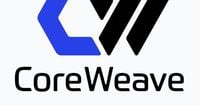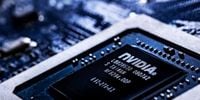CoreWeave, Inc., an AI infrastructure company, made its highly anticipated debut on the Nasdaq on Friday, March 28, 2025, with shares priced at $40 each. This initial public offering (IPO) raised a substantial $1.5 billion for the company, which has positioned itself as a significant player in the rapidly evolving field of generative AI technology.
Founded in 2017 as Atlantic Crypto, CoreWeave originally focused on cryptocurrency mining. However, in 2019, the company pivoted to provide powerful GPU resources to AI companies, capitalizing on the growing demand for AI infrastructure. Today, CoreWeave operates 32 data centers across the United States, filled with over 250,000 Nvidia graphics processing units (GPUs), which are crucial for running AI applications.
The IPO was particularly noteworthy as it marked the largest U.S. IPO since UiPath's $1.57 billion debut in 2021. Despite this milestone, CoreWeave faced challenges leading up to its public offering. Initially, the company had set an IPO price range of $47 to $55 per share, but it ultimately decided to lower the price to $40, reflecting investor caution in a market still recovering from the volatility of the past few years. Analysts noted that this adjustment indicated a recalibration of valuations in the AI infrastructure sector.
CoreWeave's financial performance has been impressive, with a reported revenue of $1.92 billion in 2024, representing a staggering 737% growth year-over-year. However, the company also reported a net loss of $863 million, raising questions about its long-term profitability. As of December 31, 2024, CoreWeave had accumulated nearly $13 billion in debt, primarily to finance its GPU infrastructure.
Despite these challenges, CoreWeave's relationship with major clients has been pivotal to its growth. In 2024, approximately 62% of its revenue stemmed from Microsoft, a significant partner that also competes with CoreWeave in the AI space. This reliance on a single customer has raised concerns among investors about the sustainability of its revenue model, especially as Microsoft's own AI strategies evolve.
CoreWeave's IPO comes at a time when the technology sector has seen a sluggish IPO market, with only 13 venture-backed technology IPOs occurring in 2022, 2023, and 2024, compared to 77 in 2021. The cautious approach from investors can be attributed to rising inflation and increased interest rates, which have made unprofitable companies less appealing.
Looking ahead, CoreWeave aims to capitalize on its growth potential by expanding its customer base and exploring new industries, including banking and pharmaceuticals. The company has also signed a significant five-year contract valued at $11.9 billion with OpenAI, further solidifying its position in the AI landscape.
As of Friday, CoreWeave's shares were indicated to open nearly 18% above their IPO price, suggesting a potential valuation of $27.4 billion on a fully diluted basis. This positive market response could signal renewed investor interest in AI-related companies, despite the lingering concerns about the sector's long-term viability.
However, the IPO's success may also depend on how well CoreWeave can manage its high debt levels and maintain its growth trajectory. The company plans to allocate around $1 billion of its IPO proceeds to pay down debt, which could help alleviate some financial pressures.
With CoreWeave's shares trading under the ticker symbol "CRWV," the market will be closely watching how the company performs in the coming months. Investors are eager to see whether CoreWeave can sustain its rapid growth and navigate the complexities of the AI infrastructure market.
In the wake of CoreWeave's IPO, other AI companies may be encouraged to pursue public offerings, creating what some analysts have dubbed an "AI parade" in the stock market. As the demand for AI solutions continues to grow, the success of CoreWeave's debut could pave the way for more companies in the sector to follow suit.
Overall, CoreWeave's journey from a cryptocurrency miner to a leading AI infrastructure provider illustrates the dynamic nature of the technology industry and the transformative potential of AI. As the company embarks on this new chapter as a publicly traded entity, its ability to adapt and innovate will be critical to its future success.







